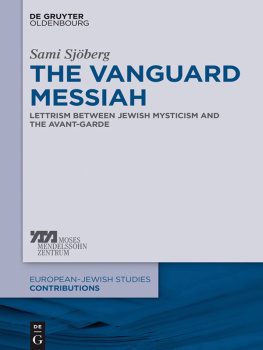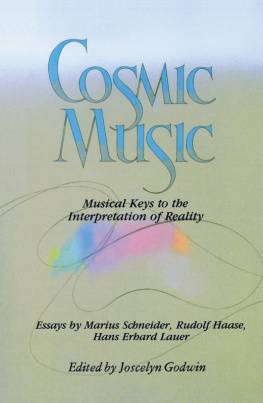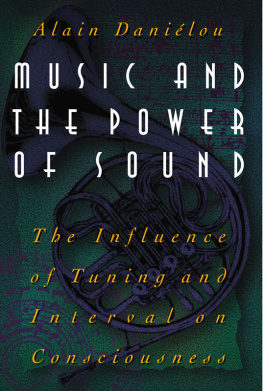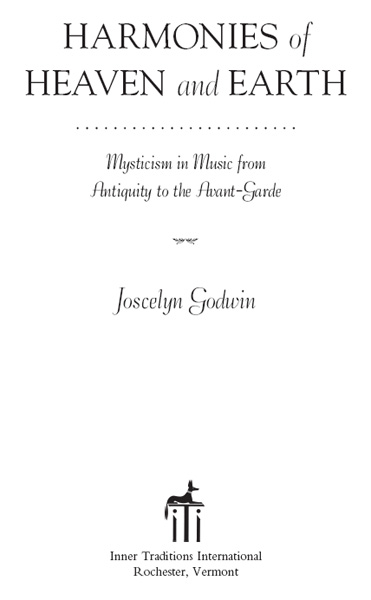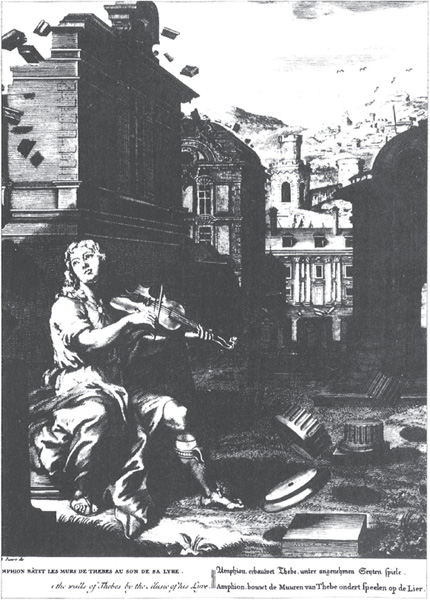For Janet

PREFACE and ACKNOWLEDGMENTS
T his book was first written in the early 1980s as part of a project to assemble the materials for a study of speculative music. Its companion works are a pair of sourcebooks, Music, Mysticism and Magic (Routledge and Kegan Paul, 1986) and The Harmony of the Spheres (Inner Traditions International, 1993); two specialized studies, The Mystery of the Seven Vowels (Phanes Press, 1991) and Music and the Occult: French Musical Philosophies, 17501950 (University of Rochester Press, 1995, first published in French, Albin Michel, 1991); an anthology of German writers, Cosmic Music (Inner Traditions International, 1989); and two editions of older works, Fabre dOlivets Music Explained as Science and Art (Inner Traditions International, 1988) and Michael Maiers Atalanta Fugiens (Phanes Press, 1987).
Harmonies of Heaven and Earth is the key work of this project, as it does not merely present the thoughts of others but attempts to make its own contribution to the tradition of speculative music. Rather than proceeding chronologically, it moves through successive layers of a universe which may broadly be called Hermetic. The book is organized in three parts. Part I discusses the theory and nature of music and its effects over the different levels of a great chain of being which stretches from the stones beneath our feet to the Empyrean Heaven. Part II returns to earth to treat the human dimension of music as it concerns the composer and listener, its moral and religious implications, and its relation to the hidden currents of history. Part III follows, in a chain of linked sections, with the speculative attempts to integrate music with mystical and esoteric theories of the universe: the shifting harmonies of the planets in their courses, and the correspondences of the seven notes of the diatonic scale, the twelve of the chromatic scale, and the unlimited range of harmonics. Part III contains material difficult to find elsewhere, but it is at times rather technical, and not all readers will want to attempt it, nor need they.
Harmonies of Heaven and Earth has been published in Japanese, German, French, and (partial) Spanish translations, and has brought me many letters from readers. I welcome the opportunity to incorporate some of their suggestions and all of their corrections. In particular, my friend Nicolas Tereshchenko has enabled me to improve the chapter on Gurdjieff s Law of Octaves, and Todd Pratum and David Fideler (unintentionally) have made me reconsider my censure of popular music. I hope that the book will continue to be useful to people working with the esoteric aspects of music, both in theory and in practice.
Earlville, New York, April 1994
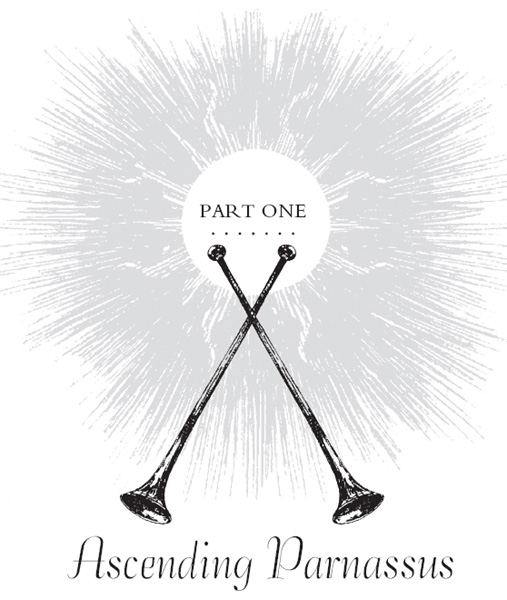
Chapter One
THE MARVELLOUS EFFECTS of MUSIC
Amphion and Zethos, twin sons of Zeus and Antiope, were, like many heroes, raised in secrecy to avoid the malevolent forces that sought to destroy them in their infancy. While they were growing up among the herdsmen on Mount Cithaeron, Amphion was favoured by Hermes with the gift of a lyre. Zethos, the more practical brother, taunted him for his devotion to the instrument, which seemed to prevent him from doing anything useful. But later, when the twins had conquered Thebes and were occupied in fortifying the city, it was Amphions turn to smile. The music of that lyre caused the stones to slide effortlessly into place, while Zethos toiled to shift them with his own brawn. Thus the walls of Seven-Gated Thebes were raised through the power of music.
T he myth of Amphion has always been a favourite of writers on musics extraordinary powers. With Orpheus, melting the heart of Pluto with his song, and Arion, summoning his dolphin-rescuer, Amphion completes the mythological trinity of figures who stand like guardian spirits at the head of many an older treatise. Once their stories were simply told, without comment. Later there were attempts to find psychological or symbolic explanations for their apparently incredible feats. Now perhaps the time has come to see them in a new light, for commonly held opinions of music, not to mention stones, are in need of revision.
To dismiss this or any myth as fiction or folly is not to deserve the name of interpreter. Even a materialist must try to find a meaning adequate to the reverence which has always been paid to myths; a core of truth to justify the thousands of years of retelling which no mere fiction can support. Perhaps the best a rationalist could do with the Amphion myth would be to regard it as a folk-memory of the Cyclopean period whose enormous stone monuments are scattered all round the Eastern Mediterranean. Amphion might then have been some prehistoric engineer, possessed of the mathematical knowledge which undergirds all ancient music theory and is one of the legendary gifts of Hermes to mankind. Such a one would have known of techniques and calculations that would make his stone-moving feasible, but the levers, counterweights, and adjustment of inclined planes would have been mysteries to his workmen and onlookers, well deserving the name of natural magic that technology would bear until the modern era. And if this archaic engineer also knew of the helpful effect that rhythmical movement and work-songs can have on a group of labourers, the picture is complete: Amphion was not singing incantations but chanties.
The supernaturalist, on the other hand, will be quite willing to take the myth literally as witness to long-forgotten techniques of prehistoric civilizations. A medieval Arab writer, Masoudi (d. 957), reported a no less extraordinary procedure for the building of the three Pyramids of Gizeh:
Leaves of papyrus, or paper, inscribed with certain characters, were placed under the stones prepared in the quarries; and upon being struck, the blocks were moved at each time the distance of a bowshot (about 150 cubits), and so by degrees arrived at the Pyramids.
And the American Edgar Cayce (18771945), who gave his readings of the past in a state of unconscious trance, described the Great Pyramid as
erected by the application of those universal laws and forces of nature which cause iron to float. By the same laws, gravity may be overcome, or neutralized, and stone made to float in air. The Pyramid was thus built by levitation, abetted by song and chanting [my italics], much in the same manner in which the Druids of England set up their huge stones at a later period.
Some time before Cayce, A. P. Sinnett had also described these structures as having been built by the power of modifying the force we call gravity,
The Swedish aircraft engineer Henry Kjellson actually saw this happen and left an illustrated account of how a group of two hundred Tibetan priests had levitated blocks of stone 1.5 meters square to the top of a cliff some 400 meters away. The priests chanting was supported by thirteen drums and six trumpets, arranged with geometrical precision facing the stones on their launching pad. Five or six stones were lifted in an hour, following a precise parabolic course to their destination. Kjellson surmised that the energy employed was related to the German whirlwind cannon developed during World War II, which supposedly concentrated a laser-like beam of sound energy. But he was not able to explain the phenomenon, only to document it.


